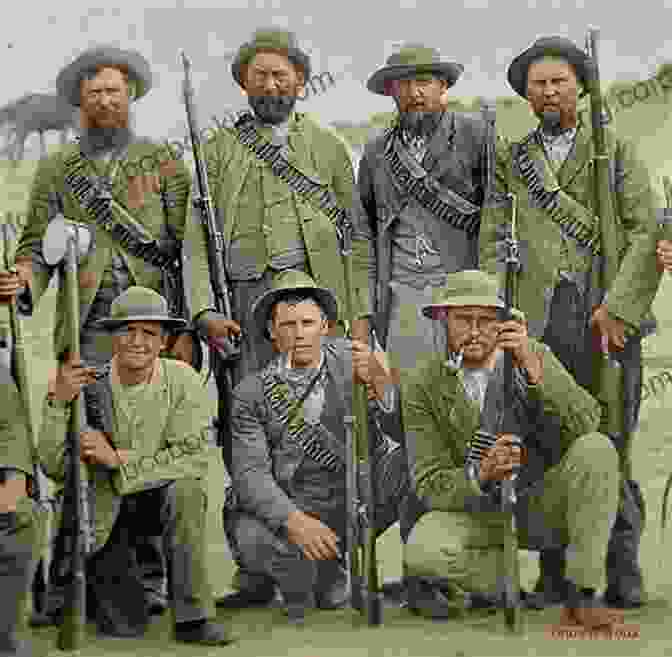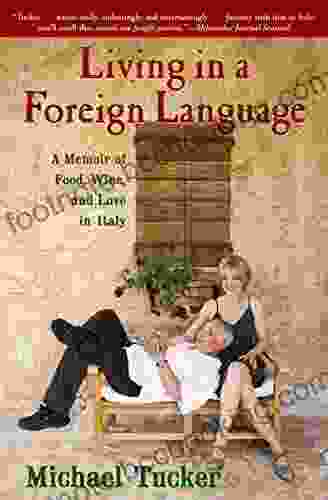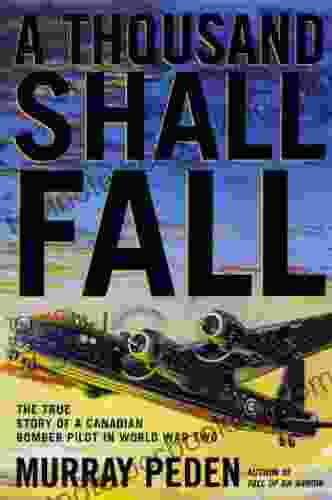Unveiling the Forgotten Conflict: The History of the Second Boer War

: A Battle for Independence and Identity

4.8 out of 5
| Language | : | English |
| File size | : | 2275 KB |
| Text-to-Speech | : | Enabled |
| Screen Reader | : | Supported |
| Enhanced typesetting | : | Enabled |
| Word Wise | : | Enabled |
| Print length | : | 452 pages |
The Second Boer War, also known as the Anglo-Boer War, was a complex and pivotal conflict that unfolded in South Africa from 1899 to 1902. It was a clash between the British Empire and the two independent Boer republics: the Orange Free State and the Transvaal Republic. On one side, the British sought to consolidate their control over South Africa and secure its vast mineral wealth. On the other side, the Boers fiercely defended their hard-won independence and their unique way of life. The war was a watershed moment in South African history, shaping its destiny and leaving a lasting legacy.
Prelude to War: Tensions and Rivalry
The seeds of the Second Boer War were sown decades earlier when the British established control over the Cape Colony in 1806. Tensions between the British and the Boers, who resented British rule and sought greater autonomy, had been simmering for years. The discovery of gold in the Transvaal in the 1880s further exacerbated the situation, attracting thousands of foreign miners, known as uitlanders, who were predominantly British. The Boers feared that the influx of uitlanders would dilute their political power and threaten their independence.
Outbreak of Hostilities: The Road to War
In 1899, relations between the British and the Boers reached a breaking point. The British government, led by Prime Minister Lord Salisbury, issued an ultimatum to the Boer republics, demanding that they grant immediate voting rights to uitlanders and reduce their military capabilities. The Boers rejected the ultimatum, and on October 11, 1899, the Second Boer War erupted.
Early Stages: Boer Victories and British Blunders
The early stages of the war were marked by a series of stunning Boer victories. Outnumbering the British forces in their own territory, the Boers employed highly effective guerrilla tactics. They besieged British garrisons at Mafeking, Ladysmith, and Kimberley, tying down significant British resources. The British, underestimating the Boer resistance, suffered heavy casualties and military setbacks.
Turning Point: The British Response
In early 1900, the British government realized the gravity of the situation and sent massive reinforcements to South Africa. General Sir Redvers Buller was appointed to command the British forces and launched a series of offensives against the Boer armies. The Boers, despite their initial successes, were gradually overwhelmed by the superior numbers and resources of the British.
Guerrilla Warfare and Atrocities
As the war progressed, the Boers resorted to guerrilla warfare, conducting raids and ambushes against the British troops. The British responded with a scorched-earth policy, destroying Boer farms and herding their families into concentration camps. These camps became notorious for their appalling conditions, with thousands of civilians, particularly women and children, dying due to disease, malnutrition, and neglect. The war became increasingly brutal, with allegations of atrocities on both sides.
Negotiations and End of the War
In 1902, after three years of grueling warfare and heavy casualties, peace negotiations commenced. The Treaty of Vereeniging was signed on May 31, 1902, ending the Second Boer War. The Boers agreed to British annexation, but were granted self-government status in 1910. The war had a profound impact on South Africa, leading to the consolidation of British control over the entire country.
Legacy and Impact of the War
The Second Boer War played a pivotal role in shaping South Africa's future. It led to the union of the Boer republics and British colonies into the Union of South Africa in 1910. However, the legacy of the war also includes the establishment of a segregated society and the dominance of the white minority over the black majority. The war's toll on the Boer population, especially women and children, left deep scars that would shape the course of South African history for decades to come.
: Lessons from a Forgotten Conflict
The Second Boer War is often overshadowed by other major conflicts in history, but its significance should not be underestimated. It was a complex and multifaceted war that shaped the destiny of South Africa and left a lasting legacy on its people. By examining the causes, events, and consequences of the Second Boer War, we can gain valuable insights into the complexities of colonialism, the struggle for independence, and the enduring impact of conflict on human societies.
4.8 out of 5
| Language | : | English |
| File size | : | 2275 KB |
| Text-to-Speech | : | Enabled |
| Screen Reader | : | Supported |
| Enhanced typesetting | : | Enabled |
| Word Wise | : | Enabled |
| Print length | : | 452 pages |
Do you want to contribute by writing guest posts on this blog?
Please contact us and send us a resume of previous articles that you have written.
 Book
Book Novel
Novel Page
Page Chapter
Chapter Text
Text Story
Story Genre
Genre Reader
Reader Library
Library Paperback
Paperback E-book
E-book Magazine
Magazine Newspaper
Newspaper Paragraph
Paragraph Sentence
Sentence Bookmark
Bookmark Shelf
Shelf Glossary
Glossary Bibliography
Bibliography Foreword
Foreword Preface
Preface Synopsis
Synopsis Annotation
Annotation Footnote
Footnote Manuscript
Manuscript Scroll
Scroll Codex
Codex Tome
Tome Bestseller
Bestseller Classics
Classics Library card
Library card Narrative
Narrative Biography
Biography Autobiography
Autobiography Memoir
Memoir Reference
Reference Encyclopedia
Encyclopedia Fred Kiel
Fred Kiel Siimon Reynolds
Siimon Reynolds Fred Nadis
Fred Nadis Thomas J Chermack
Thomas J Chermack Hill Krishnan
Hill Krishnan Kate Clair
Kate Clair Freek Vermeulen
Freek Vermeulen Sally Magnusson
Sally Magnusson Jane Pauley
Jane Pauley Fred Anderson
Fred Anderson Frank Herbert
Frank Herbert Fred Ray Lybrand
Fred Ray Lybrand Patricia J Duncan
Patricia J Duncan Mallory O Meara
Mallory O Meara Gary Sutherland
Gary Sutherland Stephen Kotkin
Stephen Kotkin Fred Cooper
Fred Cooper Frank South
Frank South Frederick George Scott
Frederick George Scott Joseph Abboud
Joseph Abboud
Light bulbAdvertise smarter! Our strategic ad space ensures maximum exposure. Reserve your spot today!

 Clayton HayesUnleash Your Creativity: Beginner's Guide to Design Space with Project Ideas,...
Clayton HayesUnleash Your Creativity: Beginner's Guide to Design Space with Project Ideas,... Morris CarterFollow ·15k
Morris CarterFollow ·15k Desmond FosterFollow ·8.2k
Desmond FosterFollow ·8.2k Emanuel BellFollow ·6.6k
Emanuel BellFollow ·6.6k Dakota PowellFollow ·3.6k
Dakota PowellFollow ·3.6k Kazuo IshiguroFollow ·5k
Kazuo IshiguroFollow ·5k Greg CoxFollow ·6.1k
Greg CoxFollow ·6.1k Harold PowellFollow ·2.1k
Harold PowellFollow ·2.1k Douglas FosterFollow ·16.3k
Douglas FosterFollow ·16.3k

 Howard Blair
Howard BlairHeroes and Villains from American History: The Biography...
David Dixon...

 Felipe Blair
Felipe BlairAn Informal History of the 1920s: Uncovering the Roaring...
The 1920s, an era...

 Howard Blair
Howard BlairHow a Peculiar Victorian Zookeeper Waged a Lonely Crusade...
In the enigmatic world of Victorian...

 Harold Powell
Harold PowellMemoir of Food, Wine, and Love in Italy: A Culinary...
Prepare your senses...
4.8 out of 5
| Language | : | English |
| File size | : | 2275 KB |
| Text-to-Speech | : | Enabled |
| Screen Reader | : | Supported |
| Enhanced typesetting | : | Enabled |
| Word Wise | : | Enabled |
| Print length | : | 452 pages |














